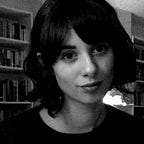Lost kit #7: Zooming out
Lewisham begins with the Saxons. Like so many other English settlements, it owes its original location to water. Some people believe it was founded by a pagan who settled in Ladywell, near what is now St Mary’s Church. He burned his boat where the ground was drier. When I think of Lewisham’s past, I like to imagine horses being washed in the Quaggy, blowsy women in aprons drying workwear on its banks. But it was the railways, not the rivers, which shaped modern Lewisham, its hub moving north to meet the Kent line.
Huge effort had gone into marking this history by the time my boyfriend and I started exploring the borough by bike in lockdown. Today, a plaque shows the location of Ladywell’s 19th century medicinal spring; art commemorates the millennium municipal project which brought the DLR. But this is only a portion. When I think of my washerwomen, I’m conscious that we don’t know is overwhelming: all the lives unrecorded, all those first visits to an English grocer’s, the layers of wallpaper still hidden under the paint in thousands of living rooms. It’s beyond comprehension, the detail needed to know this patch of south London the way a child might know the stitching of their favourite dress, the sound of the stairwell lifts outside their bedroom.
The novelist Thomas Hardy had a deep interest in the unobserved. In his stories, landscapes are haunted by imagined witnesses — the person who could have seen the silhouetted figure, if they were watching; could have heard the body slipping into the pool — as much as they are by the bones which lie under the barrow, unbeknownst to the villagers dancing above. A couple I know, engaged, recount all the times they were unknowingly in the same room before they met. I like these pedestrian stories as much as the ones of the broken alarm clock which saves the machinist from the factory fire, of the untaken, overturned train. One morning, I stopped to help a cyclist fix a flat, joking that the delay was fine as my office doesn’t really fill up until 10. “I’m a neurosurgeon,” he replied.
People often mention maps when they talk about bikes. “It opens up the map,” one colleague says of changing to an electric model. Riding home through Ladywell one spring evening, my boyfriend shares a sentiment I’ve heard from other cyclists and indeed from adverts for trains and petrol, although the authors of the twentieth-century Shell guides knew nothing of Google Maps, the product which Conor has in mind when he refers to “zooming out.” What he means is that cycling shifts scale: A twenty minute walk to Greenwich park takes seven by bike. Chaucer’s pilgrimage to Canterbury lasts a morning.
Every day, my commute passes the place where I met the neurosurgeon. I enjoy this about commuting: The route accruing substance through repetition. At this spot, you saw a Condor with the same colour scheme as yours; at that, you cried after a man shouted at you, and although you have passed by it a dozen times since, you remember it every pass. This means, logically, the route also promises things yet to come: people yet to talk to you at the lights, the smells from a bread van you are yet to draft behind, ways you are yet to see the light glint off the City’s glass — but could see, if you were to leave earlier or later, or just to repeat your ride against the changing times of dawn.
In Richard McGuire’s 2014 graphic novel Here, interpolated panels depict, say, 1902 alongside 1995, so that a house is built while a couple argue inside it; its foundations melt in the heat death of the universe while a deer strolls the same spot in an antediluvian forest.
More and more, this is how I experience London: not as a stage for memories but as a single, colliding present. In a team pursuit, the time is taken from the third of four cyclists, which means as they approach the home straight riders fan out from a single, aerodynamic paceline to cross the finish as close to side-by-side as possible; from sequential to simultaneous. Turning into Russell Square on my commute, I don’t remember so much as sense her, just over there: a brown-haired girl in her early 20s, standing under the trees on a warm summer night. She’s drunk off no dinner and starry-eyed for a man, and she’s almost dizzyingly happy; she has no idea how green she is, or of what’s to come — of how small a part of her life this moment will be — but I think she can sense it, that she’s young and in the city, that this won’t last forever. As I turn the corner to pass Bedford Way, I hold her there in the corner of my eye the same way I hold a fellow commuter on my shoulder when the lights change.
Virginia and Leonard Woolf bought their first car, a Singer, in 1927, after the publication of To The Lighthouse. In July, Woolf wrote in her diary:
This is a great opening in our lives. One may go to Bodiam, to Arundel, explore the Chichester downs, expand that curious thing, the map of the world in one’s mind.
In 1948, a woman cuts through a central London square on her Raleigh as I pass the other way to work in 2022, while all the while my father’s hand, large against my child’s body, rests on my saddle to guide me in 1996. In Lewisham, at the height of the pandemic of 2020, the sun has started setting. Zoom out the map and you can see a couple racing back from the empty park, past the burgundy plaque that marks the Ladywell spring, home along the Roman roads.
Lewisham is the London Borough of Culture 2022. Find out more here.
